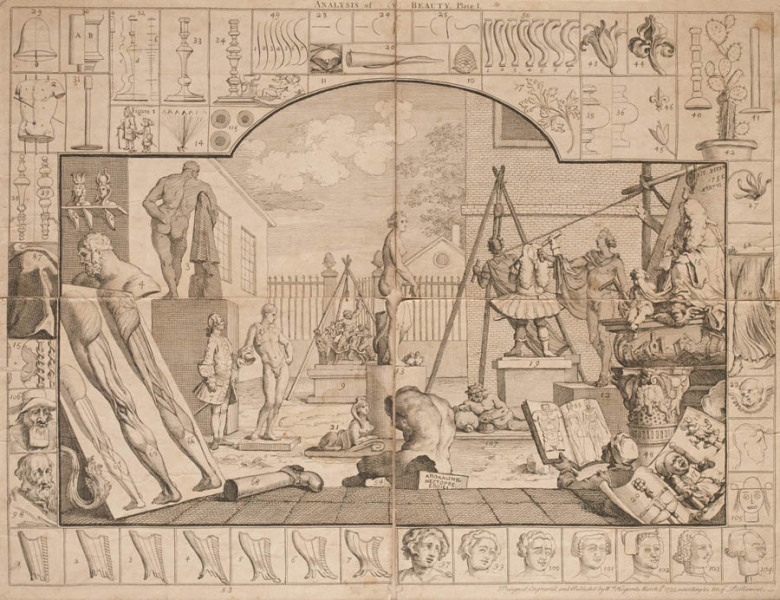Hogarth, William. Analysis of Beauty, Plate 1.
Etched and engraved print backed by fabric.
In: William Hogarth’s The Analysis of Beauty: Written with a View of Fixing the Fluctuating Ideas of Taste (London, 1753).
It is possible that artistic theory encouraged Audubon towards some of his more elegantly curving compositions, such as that of his passenger pigeons. In 1753 the British painter William Hogarth (1697-1764) laid out his theory of the “Line of Beauty,” an S-shaped curving line found in the most beautiful forms in nature, such as flowers: see number 4 in box 49 at the top of the print. According to Hogarth, the serpentine line captured the attention of the viewer and gave the impression of life and movement to a still image. A gently curving and undulant line imparted grace and power to works of art when used to describe the outline of a figure or interior details. Writer Franklin Burroughs convincingly detects the “Line of Beauty” in Audubon’s pigeons that animates the boundary of their bodies as well as the arching branches that support them.
